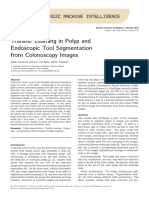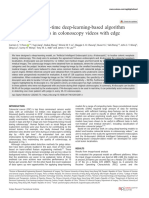Why did your team choose that topic?
Endoscopy image processing has emerged as a key priority for
development within the broader field of image processing, especially with
the rapid advancements in artificial intelligence (AI) and deep learning.
Despite its significant potential, the image content being processed faces
several challenges, particularly in handling noise and blurriness in images.
On the other hand, improving image resolution is also one of the research
directions our team is focusing on.
Review of related work?
In Python, there are several techniques you can use to enhance
endoscopy images, especially by using image processing libraries like
OpenCV, scikit-image, and Pillow, as well as machine learning libraries
such as TensorFlow and PyTorch.
Overview of dataset being used in the project?
Hyper-Kvasir dataset which is the largest publicly released gastrointestinal
tract image dataset. In total, the dataset contains 110,079 images and
373 videos where it captures anatomical landmarks and pathological and
normal findings.
The group conceptual design?
Use deep learning to detect the polyps in the dataset


























































